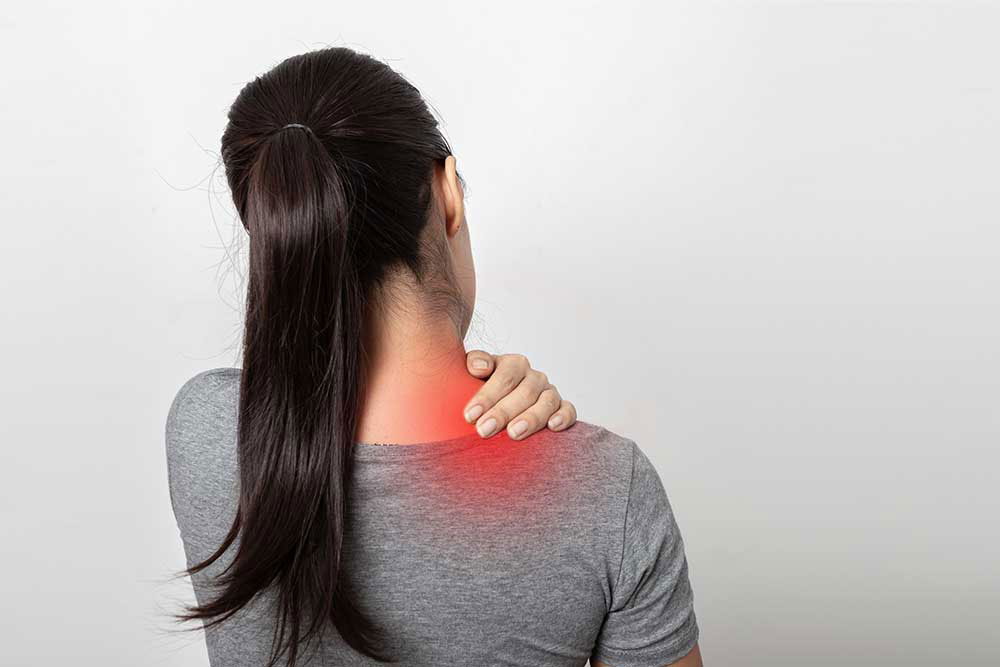Injection Therapy
Steroid joint injections reduce inflammation


Steroid Injection is a drug therapy where corticosteroids are injected into the joints. Steroids help minimise the inflammation of your joints and work well on pain and swelling to allow you to move more easily without pain. If you are having physiotherapy, this can improve your participation and speed up your return to your normal activities.
Our Physiotherapist is a qualified, Independent non-medical prescriber. This means that they have been given the right to do joint and soft tissue injections after having successfully done the relevant courses and qualifications.
The medication that they will use is a steroid, which is an anti-inflammatory drug. This can sometimes be used with a local anaesthetic or saline solution to help spread the steroid around the body.
Can I Use Oral Pills Instead?
Yes, you can and many people do. However, an injection will work quicker because the steroid is injected directly into the area of your body where it needs to take effect. A pill or ointment will need to be absorbed by the skin or stomach before it can start working. It then travels in the blood to reach the affected area. But, this gets diluted as it goes around because it also affects areas where it is not needed and it is a less effective treatment. Some people may suffer side effects from these pills, such as stomach problems.
What/Who Do We Treat?
 Osteoarthritis of joints
Osteoarthritis of joints
 Rheumatoid arthritis
Rheumatoid arthritis
 Carpal tunnel syndrome
Carpal tunnel syndrome
 Rotator cuff impingement
Rotator cuff impingement
 Frozen shoulder
Frozen shoulder
 Loss of mobility and independence
Loss of mobility and independence
 Bursitis
Bursitis
 Tennis & Golfers elbow
Tennis & Golfers elbow
 Tendinitis and tendinopathies
Tendinitis and tendinopathies
 Plantar fasciitis
Plantar fasciitis

Is There Anything Else I Need To Know Before I Have A Steroid Injection?
If you have an infection, especially in the part of your body that you want to have injected, then you should delay having your injection.
In the first 2 weeks after your steroid injection, you will need to take it easy. If you exercise too much too quickly, then you can damage your tendon.
After this, it’s really important that you continue doing the exercises that you have been given by your physiotherapist.
The injection can take anywhere between 2 days and 2 weeks to really take effect and you will see the best results 4-6 weeks after the injection. This is why we recommend you come back to see your physiotherapist at this time so that they can monitor the improvement.
We will NOT inject directly into the spine as this is a specialised medical procedure.
You Will Also Need To Inform Your Clinician Of The Following If You:
 Have any allergies to medication, especially local anaesthetic
Have any allergies to medication, especially local anaesthetic Are taking anticoagulants (blood thinners like Warfarin or Aspirin) or are on immunosuppressants such as oral steroids
Are taking anticoagulants (blood thinners like Warfarin or Aspirin) or are on immunosuppressants such as oral steroids Have any infections or are unwell and/or feeling feverish
Have any infections or are unwell and/or feeling feverish Are diabetic, epileptic or taking steroids
Are diabetic, epileptic or taking steroids Have had surgery or are about to have surgery in the affected area
Have had surgery or are about to have surgery in the affected area Are pregnant and/or breast feeding
Are pregnant and/or breast feeding Do not want the injection
Do not want the injection Are taking Amphotericin (an antifungal drug), Cimetidine (for treatment of a peptic ulcer) or Suxanthonium (a nerve blocking drug).
Are taking Amphotericin (an antifungal drug), Cimetidine (for treatment of a peptic ulcer) or Suxanthonium (a nerve blocking drug).
Possible Side Effects:
Occasionally there are side effects from the type of injection, which are mild and very rare, for example:
 An increase in pain may be felt for 24-48 hours. It is advisable to take pain killers if required to relieve your discomfort
An increase in pain may be felt for 24-48 hours. It is advisable to take pain killers if required to relieve your discomfort Menstrual cycle alteration
Menstrual cycle alteration Bruising may appear where you had the injection
Bruising may appear where you had the injection Mild facial flushing. This may last up to 48 hours and will settle naturally
Mild facial flushing. This may last up to 48 hours and will settle naturally Diabetics may find that their blood sugar levels alter slightly over the next few days.
Diabetics may find that their blood sugar levels alter slightly over the next few days. Skin discolouration and/or dimpling where you had the injection
Skin discolouration and/or dimpling where you had the injection Very occasionally a rupture may occur in the tendon. To minimise this small risk it is important to follow the advice to rest
Very occasionally a rupture may occur in the tendon. To minimise this small risk it is important to follow the advice to rest
If you experience any of the above side effects please let us know immediately. Infection and allergic reactions are rare but unfortunately they can happen. If the injected area becomes red, hot, swollen, tender and/or you feel feverish you must seek medical advice immediately and inform us as soon as you can.
Anaphylactic shock can occur on extremely rare occasions as an extreme reaction to a local anaesthetic. After you have had your injection, we recommend that you take advantage of our reception and have a drink, a biscuit and wait for about 30 minutes until you leave. Not only will you have the opportunity to chat to us, but we can also be on hand if you start to feel unwell.
We will do our absolute best to keep side effects to a minimum. We will do this by keeping the drug doses to the recommended levels, using the correct and appropriate techniques and careful examination of the injection site. We will do everything we can to minimise any infections by making sure that we clean the area thoroughly, use sterile equipment and wash our hands according to the guidelines before we touch the injection site.
How Frequently Do You Need These Injections?
On the vast majority of occasions, one injection is enough. However, it can happen that several injections are required. These can be offered every three months if required, but will depend on the type of condition that you have and where you are being injected. The National Institute for Clinical Excellence (NICE) recommends that no joint should be injected more than 3 times in any 12 month period.
Preparation:
 The physiotherapist will explain in detail about the joint steroid injection and answer any questions that you may have following on from the leaflet you should have been sent prior to your appointment.
The physiotherapist will explain in detail about the joint steroid injection and answer any questions that you may have following on from the leaflet you should have been sent prior to your appointment. You will have a chat about your medical history and any medication that you are on.
You will have a chat about your medical history and any medication that you are on.  Wear comfortable clothes so that the physiotherapist can get to the place where you are going to have the injection easily.
Wear comfortable clothes so that the physiotherapist can get to the place where you are going to have the injection easily. Following the anaesthesia, there is a chance that your joint might feel numb. We would recommend bringing somebody along with you to drive you home (and we can promise them a good drink and biscuit as well)
Following the anaesthesia, there is a chance that your joint might feel numb. We would recommend bringing somebody along with you to drive you home (and we can promise them a good drink and biscuit as well) Resting the joint for a day or two after the injection is always recommended. It is a good idea to make sure you have enough food and drink in the house for this time!
Resting the joint for a day or two after the injection is always recommended. It is a good idea to make sure you have enough food and drink in the house for this time!
After Your Injection:
 Please rest the injected area for two or three days, or as recommended by your physiotherapist.
Please rest the injected area for two or three days, or as recommended by your physiotherapist. Continue to monitor the injection site for up to 3 weeks to ensure that there are no signs of infection. If you have any doubt, please contact a medical professional.
Continue to monitor the injection site for up to 3 weeks to ensure that there are no signs of infection. If you have any doubt, please contact a medical professional. Start your exercise program that you were given by your physiotherapist.
Start your exercise program that you were given by your physiotherapist.
You can continue taking your pain killers after you have had your steroid injection. It is likely that you will feel some soreness from the needle.













